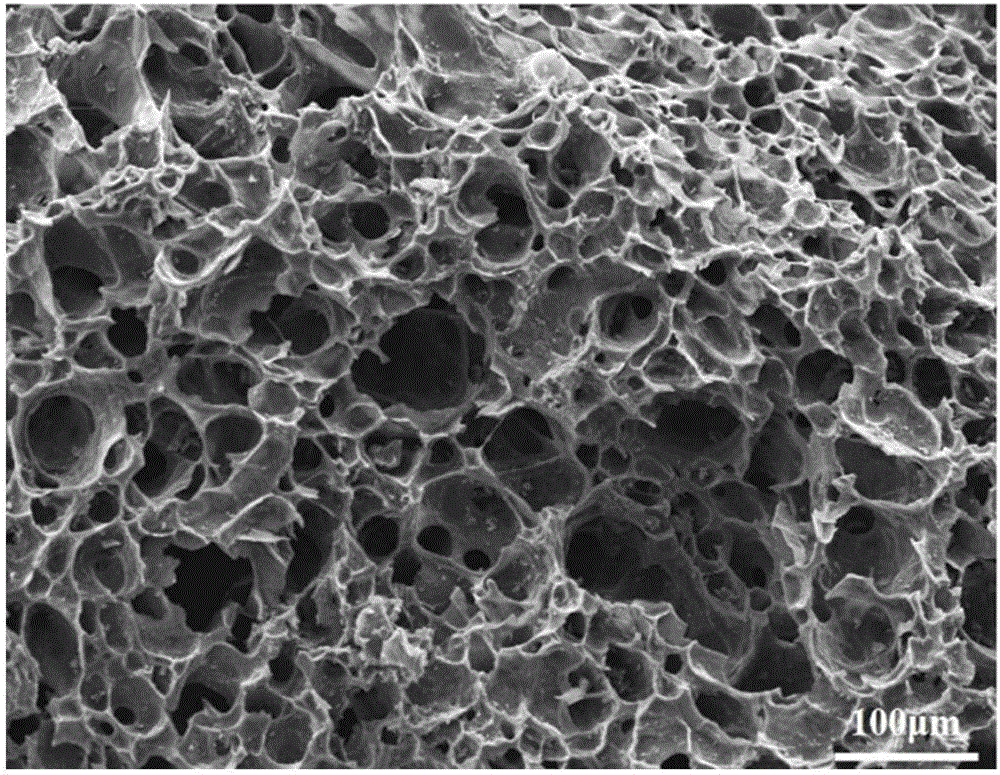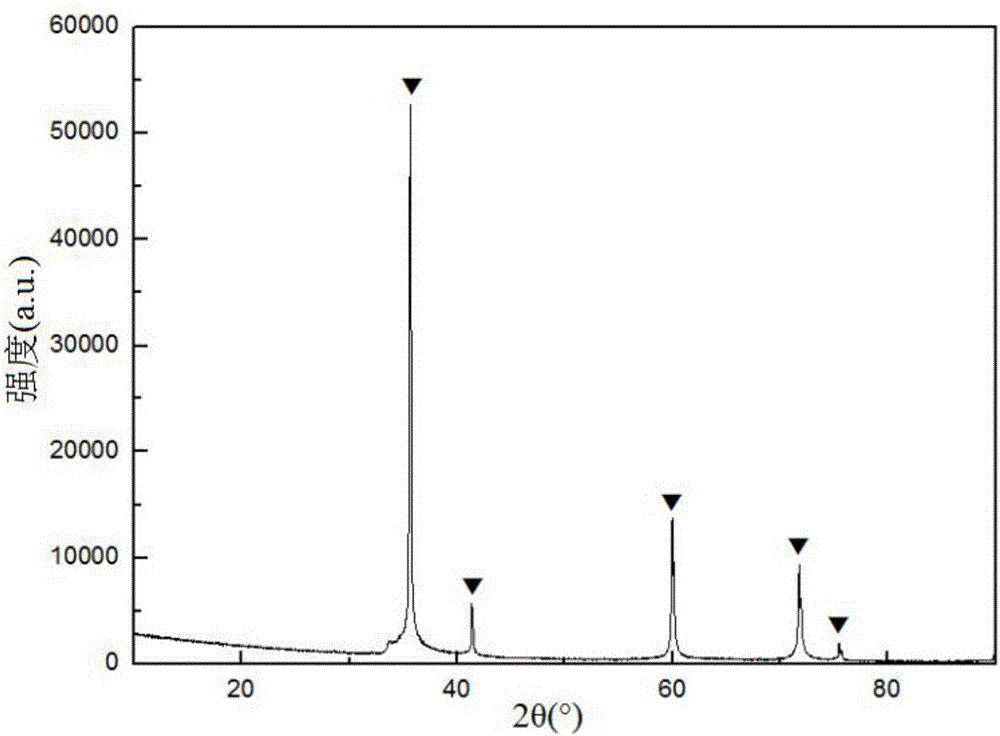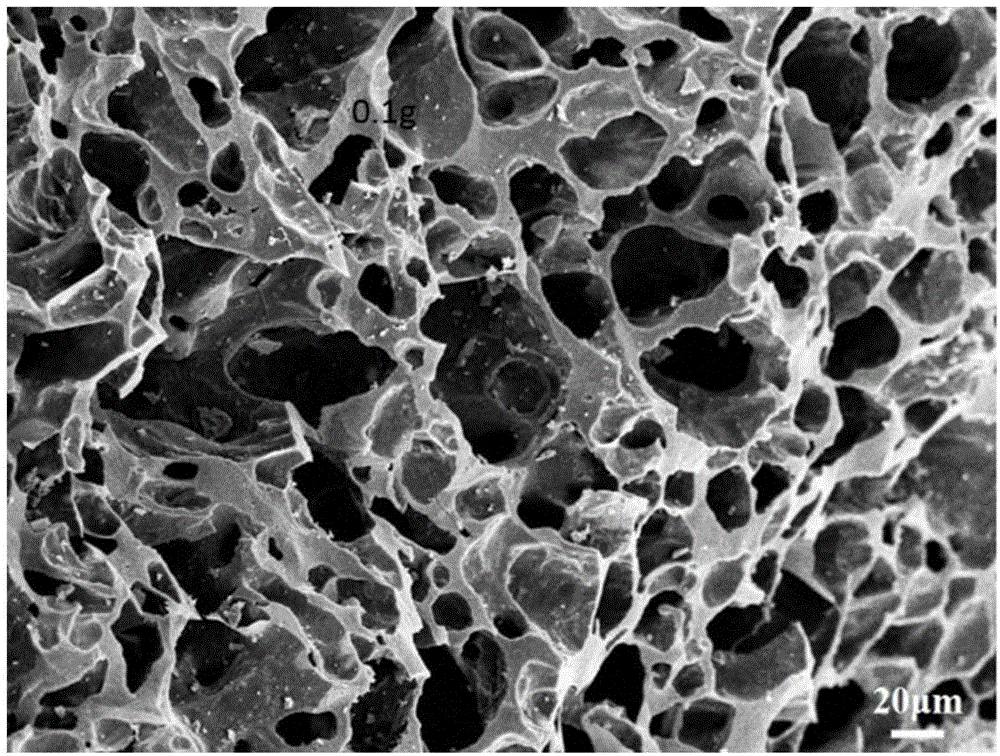Method for preparing high-temperature-resistant structural SiC porous ceramics
A porous ceramic and structural technology, applied in ceramic products, applications, household appliances, etc., can solve the problems of small specific surface area, low mechanical strength of high-porosity ceramics, difficult to control the pore size distribution and size of porous ceramics, etc. Adjustment, excellent effect of mechanical bearing capacity
- Summary
- Abstract
- Description
- Claims
- Application Information
AI Technical Summary
Problems solved by technology
Method used
Image
Examples
specific Embodiment approach 1
[0021] Specific implementation mode 1: This implementation mode is a method for preparing a high-temperature-resistant structural SiC porous ceramic, which is specifically completed according to the following steps:
[0022] 1. Knead the dough: use deionized water to mix the flour and yeast evenly, and knead it into a dough;
[0023] 2. Fermentation and freeze-drying: the dough is first fermented at constant temperature, and then freeze-dried to obtain porous dough;
[0024] 3. Carbonization: Carbonize the porous dough to obtain a carbon porous skeleton;
[0025] 4. Sintering: place the carbon porous skeleton on the reactive silicon source, then sinter, and then cool to room temperature to obtain high temperature resistant structured SiC porous ceramics.
[0026] In the process of SiC formation in this embodiment, the following chemical reactions will occur in the system:
[0027] SiO 2 (s)+Si(s)=2SiO(g) (1)
[0028] SiO 2 (s)+C(s)=SiO(g)+CO(g) (2)
[0029] SiO(g)+2C(s)=...
specific Embodiment approach 2
[0036] Embodiment 2: The difference between this embodiment and Embodiment 1 is that the mass ratio of flour to yeast described in step 1 is 200:(1-5). Others are the same as the specific embodiment one
specific Embodiment approach 3
[0037] Embodiment 3: This embodiment differs from Embodiment 1 or Embodiment 2 in that the volume ratio of the mass of flour to deionized water described in step 1 is 1g:(0.6mL-1mL). Others are the same as those in Embodiment 1 or 2.
PUM
 Login to View More
Login to View More Abstract
Description
Claims
Application Information
 Login to View More
Login to View More - R&D
- Intellectual Property
- Life Sciences
- Materials
- Tech Scout
- Unparalleled Data Quality
- Higher Quality Content
- 60% Fewer Hallucinations
Browse by: Latest US Patents, China's latest patents, Technical Efficacy Thesaurus, Application Domain, Technology Topic, Popular Technical Reports.
© 2025 PatSnap. All rights reserved.Legal|Privacy policy|Modern Slavery Act Transparency Statement|Sitemap|About US| Contact US: help@patsnap.com



